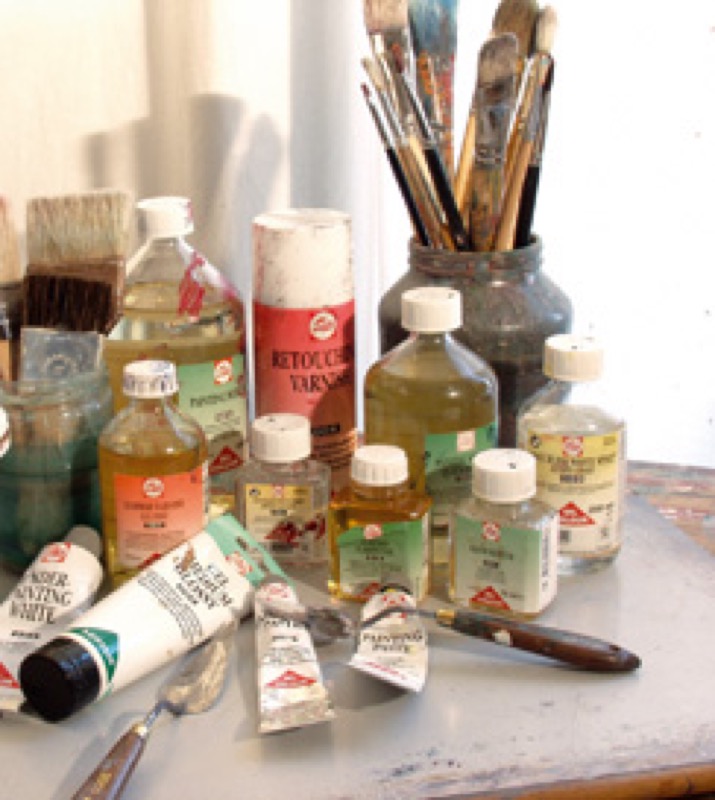Oil paint needs to be diluted and, conversely, thickened. Become familiar with the various accessories!
Oil: Selecting your material: media, thinners and varnishes
Rate this tutorial
1. Thinners: Spirits of turpentine or white spirit?
Both are used to fluidize paints and clean paintbrushes.
- Turpentine: transparent, colorless, compatible with every medium, it is still the best thinner. One drawback: it has a very strong odor. Remember to leave a window open while working.
- White spirit: it is used as a solvent and is an excellent, economical substitute for turpentine (keeping in mind that the latter is often preferred). Distilled from petroleum, it is light, colorless and low-odor.
Handy advice
If you work regularly with oil paints, get your thinners in large bottles, which cost less. Note also that you can recycle your solvents by allowing them to settle in the container after using them.

2. Media: everything is useful its own way!
Media alter the behavior of oil paints by accelerating or retarding its drying, by accentuating its natural brilliance or fluidizing it: this is why they are commonly called "siccatives." Here are the main ones.
- Purified linseed oil produces the finest, most transparent and brilliant paint, and retards its drying.
- Bleached linseed oil has the same properties as the purified, but dries a little faster.
- Boiled linseed oil: increases its brilliance and accelerates the drying time of paint
- Poppy seed oil has the consistency of butter. It is used with the alla prima technique (link to oil/Basic concepts) to thicken the paint, when paintbrush strokes need to remain visible. Note that it dries slowly!
- Liquin is an alkyd medium (synthetic resin) that dries fast and improves the flow and transparency of paint: it is ideal for glazes.
- A glazing medium allows you to increase the transparency of the paint without influencing drying time.
- Impasto media are mixed with paint, allowing you to apply thick layers of paint without having it wrinkle or crack.
- Painting paste increases the transparency of paints while preserving their viscosity; it shortens drying time.
- Modeling paste is a thick, aquiferous paste that is usually applied to the surface of the medium before covering it with paint.
3. Varnish: the finishing touch
Once your work is finished, protect it from the ravages of time, pollution and dust by varnishing it.
- Each varnish has a shade of its own, making it more or less transparent. Note that shiny varnishes are the most transparent ones.
- Choose a reversible varnish: you can always put a new coat on your work when the first one has yellowed.
Recommended product:
Graduate Oil and Acrylic
